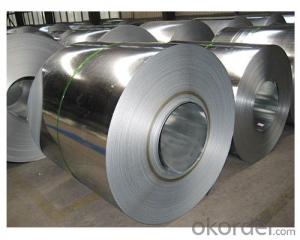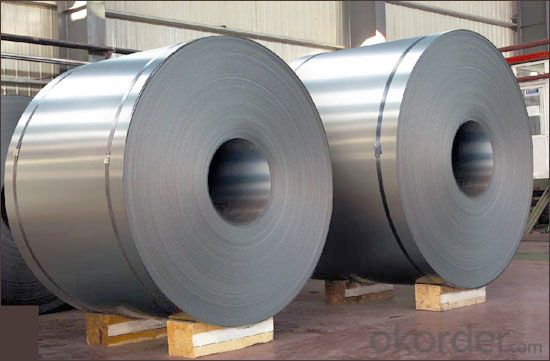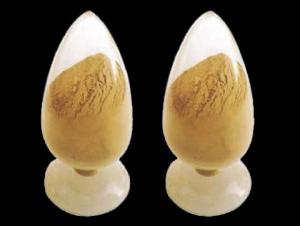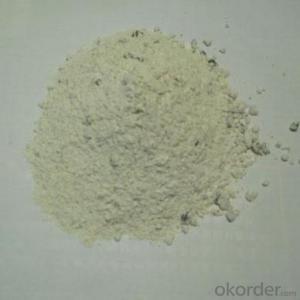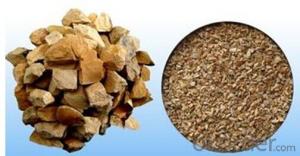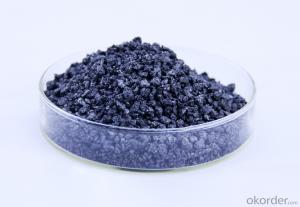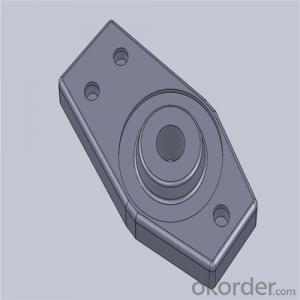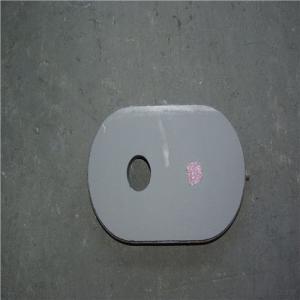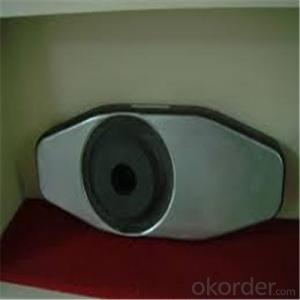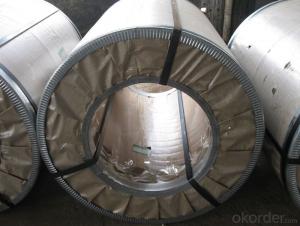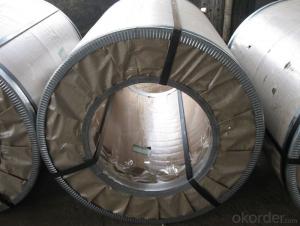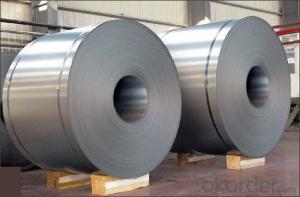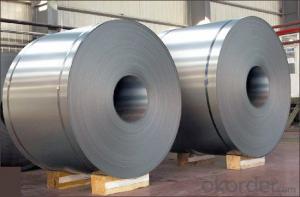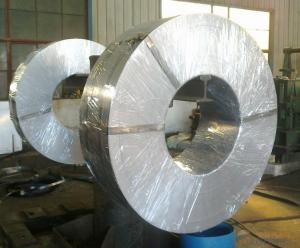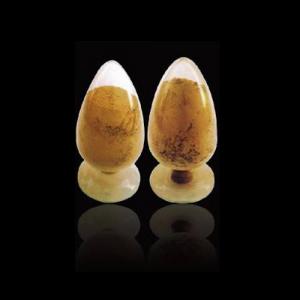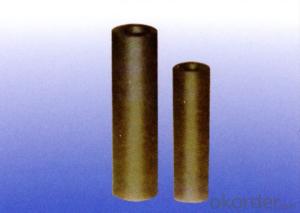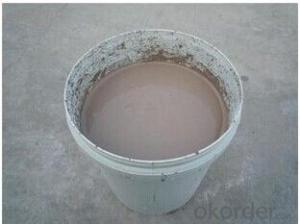Monolithic Refractories for Iron and Steel Industry - Best Cold Rolled Steel Coil Q195~Q345 with Good Visual Effect
- Loading Port:
- China main port
- Payment Terms:
- TT OR LC
- Min Order Qty:
- 50 m.t.
- Supply Capability:
- 10000 m.t./month
OKorder Service Pledge
OKorder Financial Service
You Might Also Like
Best Cold Rolled Steel Coil Q195~Q345 --Good Visual Effect
1.Structure of Best Cold Rolled Steel Coil Q195~Q345 :
The raw material of cold rolled steel coil/sheet is high quality hot rolled product, and after pickling continuous rolling, degreasing, annealing,skin pass,slitting and cut to length line etc. Along with it many kinds of new technology and new process of global cold rolling production have been applied. Therefore the quality of the goods could be guaranteed. The product is widely used in outdoor and interior decoration, furnishing manufacturing, home appliance, automobile etc.
2.Main Features of Best Cold Rolled Steel Coil Q195~Q345 :
• Excellent process capability
• Smooth and flat surface
• Workability, durability
• Excellent heat resistance performance
3. Cold Rolled Steel Images
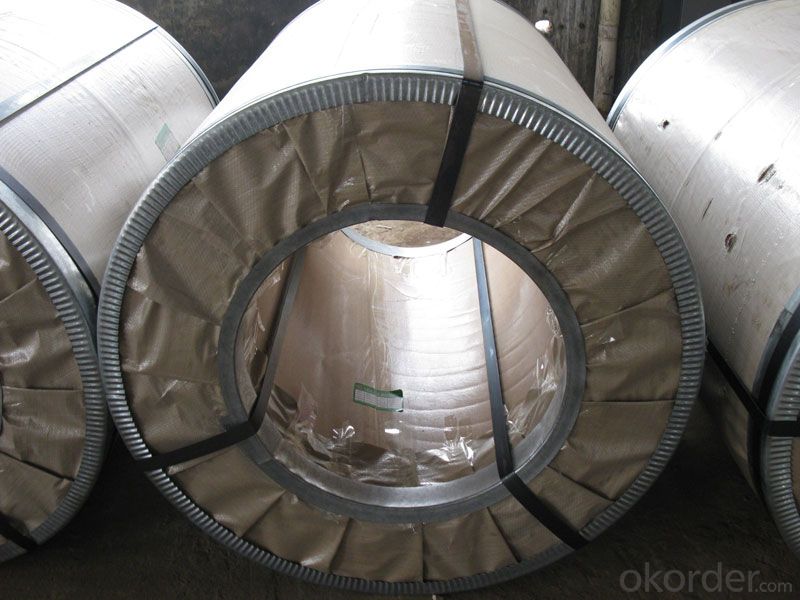
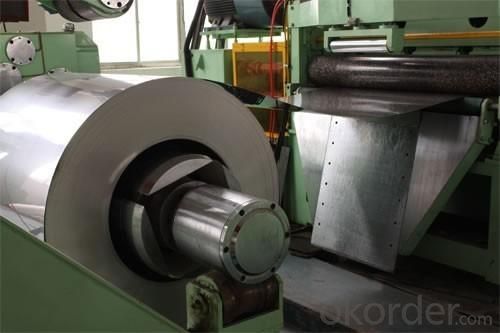
4.Cold Rolled Steel Specification
Standard:AISI,ASTM,DIN,GB,JIS,JIS G3302 ASTM 653M EN10142
Grade: Q195~Q345
Thickness: 0.16mm~2.0mm
Width: 1250mm MAX
Coil weight:3-12 MT
Coil ID:508/610mm
FAQ
1.How to guarantee the quality of the products?
We have established the international advanced quality management system,every link from raw material to final product we have strict quality test.
2. How long can we receive the product after purchase?
Usually within thirty working days after receiving buyer’s advance payment or LC. We will arrange the factory manufacturing as soon as possible. The cargo readiness usually takes 15-25 days, but the shipment will depend on the vessel situation.
- Q: What are the key trends in the use of monolithic refractories in the iron and steel industry?
- One key trend in the use of monolithic refractories in the iron and steel industry is the increasing demand for tailored solutions. As the industry continues to evolve and become more specialized, there is a growing need for refractory materials that can be customized to meet specific requirements and challenges. Another important trend is the development of advanced monolithic refractories with enhanced performance characteristics. Manufacturers are constantly working on improving the properties of these materials, such as higher resistance to thermal shock, better thermal conductivity, and increased durability. This allows for improved efficiency and productivity in the iron and steel production processes. Additionally, there is a shift towards environmentally friendly refractory solutions. With growing concerns over sustainability and emissions, the industry is looking for refractory materials that have a lower carbon footprint and are made from renewable or recycled materials. This trend aligns with the broader push towards greener practices in the iron and steel sector. Overall, the key trends in the use of monolithic refractories in the iron and steel industry revolve around customization, performance enhancement, and sustainability. These trends are driven by the evolving needs of the industry and the desire to optimize production processes while minimizing environmental impact.
- Q: What are the advantages of using insulating castables in the iron and steel industry?
- The advantages of using insulating castables in the iron and steel industry are numerous. Firstly, insulating castables have excellent thermal insulation properties, which help to reduce heat loss during the manufacturing process. This leads to increased energy efficiency and cost savings for the industry. Additionally, insulating castables have a low thermal conductivity, meaning they can withstand high temperatures without transferring excessive heat. This is crucial in the iron and steel industry, where temperatures can reach extremely high levels. By using insulating castables, the industry can ensure the longevity and durability of its equipment and structures. Furthermore, insulating castables have good resistance to thermal shock, meaning they can withstand rapid temperature changes without cracking or breaking. This is particularly beneficial in the iron and steel industry, where the heating and cooling processes are frequent and intense. Lastly, insulating castables have a low density, making them lightweight and easier to handle and install. This not only saves time and effort during installation but also reduces the structural load on equipment and structures. Overall, the use of insulating castables in the iron and steel industry offers advantages such as improved energy efficiency, enhanced durability, resistance to thermal shock, and ease of installation.
- Q: What are the key properties of shotcrete mixes used for monolithic refractory applications?
- The key properties of shotcrete mixes used for monolithic refractory applications include high strength, low porosity, high abrasion resistance, good thermal shock resistance, and excellent adhesion to the substrate. These properties ensure the durability and effectiveness of the shotcrete in withstanding high temperatures and harsh conditions in refractory applications.
- Q: What are monolithic refractories and how are they different from other refractory materials?
- Monolithic refractories are a type of refractory material that are composed of a single, homogeneous structure, as opposed to being made up of multiple separate pieces. They are different from other refractory materials, such as bricks or tiles, which are assembled together to form a lining. Monolithic refractories are typically made from a combination of aggregates, binders, and additives, which are mixed together and applied in a plastic or semi-plastic state. This allows for easier installation, as they can be shaped and formed to fit the specific dimensions of the furnace or kiln. Additionally, monolithic refractories offer benefits such as better thermal shock resistance, reduced joints and seams, and improved overall performance due to their seamless nature.
- Q: How do monolithic refractories contribute to the overall reliability of iron and steel processes?
- Monolithic refractories play a crucial role in enhancing the overall reliability of iron and steel processes in several ways. Firstly, they provide excellent thermal insulation, which helps in maintaining consistent and controlled temperatures within the furnaces and other equipment involved in the production process. This ensures the stability of the process and avoids any sudden temperature fluctuations that could lead to equipment failure or product quality issues. Secondly, monolithic refractories offer high resistance to thermal shocks and mechanical stresses, which are common in iron and steelmaking operations. These refractories can withstand extreme temperatures, rapid heating and cooling cycles, and the corrosive nature of molten metals, thereby prolonging the lifespan of the equipment and reducing the frequency of repairs or replacements. Moreover, monolithic refractories have a superior ability to resist chemical attacks from molten metals, slag, and other harsh substances encountered in iron and steel processes. This resistance prevents the refractories from deteriorating or corroding over time, ensuring their integrity and preventing any contamination of the metal being produced. Lastly, the use of monolithic refractories allows for greater design flexibility and ease of installation compared to traditional brick refractories. This flexibility enables the construction of complex shapes and structures, optimizing the efficiency and productivity of iron and steelmaking processes. Overall, monolithic refractories contribute significantly to the reliability of iron and steel processes by providing excellent thermal insulation, resistance to thermal shocks and chemical attacks, and facilitating flexible design and installation options.
- Q: Can monolithic refractories be used for the lining of blast furnace runners and troughs?
- Yes, blast furnace runners and troughs can have their lining done with monolithic refractories. Monolithic refractories, unlike traditional refractory bricks that are made by assembling individual units, are composed of a single, homogeneous structure. There are several advantages to using monolithic refractories for lining blast furnace runners and troughs. Firstly, they exhibit excellent thermal shock resistance, which is vital in this application given the extreme temperature fluctuations the lining is exposed to. Additionally, monolithic refractories have a good resistance to chemical attack from the molten metal and slag, which helps prolong the lining's lifespan in the harsh working environment of blast furnaces. Moreover, monolithic refractories can be easily installed in intricate shapes and structures, allowing for greater flexibility in designing the lining of blast furnace runners and troughs. This ease of installation also results in reduced downtime during maintenance and repair, as monolithic refractories can be applied quickly and efficiently. To summarize, monolithic refractories are a suitable option for lining blast furnace runners and troughs due to their thermal shock resistance, chemical resistance, and easy installation. Their use can contribute to improving the longevity and performance of these critical components in blast furnace operations.
- Q: How do monolithic refractories contribute to the overall efficiency of ladle cleaning operations?
- Enhancing the overall efficiency of ladle cleaning operations is a crucial role played by monolithic refractories. Composed of a single, homogeneous structure, these refractory materials offer several key advantages that contribute to improved efficiency. To begin with, monolithic refractories possess exceptional thermal insulation properties. This means they can withstand high temperatures without cracking or deteriorating, thereby allowing for more efficient and effective ladle cleaning operations. By consistently maintaining a specific temperature, these refractories minimize heat loss and ensure uninterrupted and timely completion of the cleaning process. Furthermore, monolithic refractories exhibit high resistance to chemical attacks. In steelmaking processes, ladles often come into contact with aggressive molten metals and slag that can erode and corrode the refractory lining. However, monolithic refractories are designed specifically to endure these harsh conditions, providing a longer service life and reducing the need for frequent repairs or replacements. This not only saves time but also reduces the overall cost of ladle maintenance. In addition, monolithic refractories possess excellent flowability and workability. They can be easily shaped and installed in the ladle lining, enabling quick and precise application. This ease of installation results in shorter downtime during ladle cleaning operations, as the refractory lining can be swiftly repaired or replaced. Moreover, the flowability of monolithic refractories ensures better coverage and adherence to the ladle's surface, leaving no gaps or weak points. This enhances the overall effectiveness of the cleaning process and prevents potential contamination or reactivity issues. In conclusion, monolithic refractories significantly contribute to the overall efficiency of ladle cleaning operations by providing exceptional thermal insulation, high resistance to chemical attacks, and easy workability. These properties lead to reduced downtime, increased durability, and cost savings, making monolithic refractories a vital component in optimizing ladle cleaning processes.
- Q: What are the key properties of patching mixes used for monolithic refractory repairs?
- The key properties of patching mixes used for monolithic refractory repairs include high thermal conductivity, excellent adhesion, good workability, high strength, resistance to thermal shock, and suitable setting and drying times. These properties ensure effective repairs and long-lasting performance in high-temperature applications.
- Q: How do monolithic refractories improve the efficiency of ladle and tundish drying systems?
- Monolithic refractories play a crucial role in improving the efficiency of ladle and tundish drying systems. These systems are used in the steel industry for the drying process of ladles and tundishes before they are used for casting molten steel. One of the main advantages of monolithic refractories is their ability to provide a seamless lining, without any joints or gaps. This ensures that there are no weak points in the lining, reducing the risk of heat loss during the drying process. By maintaining a uniform and continuous lining, monolithic refractories help to achieve faster and more efficient drying of ladles and tundishes. Furthermore, monolithic refractories have excellent thermal insulation properties. They have low thermal conductivity, which means that they can effectively retain heat and prevent its transfer to the surroundings. This insulation capability allows for better heat retention within the ladles and tundishes during the drying process, resulting in faster and more energy-efficient drying. Monolithic refractories also offer superior thermal shock resistance. During the drying process, ladles and tundishes are subjected to rapid temperature changes, which can cause thermal stress and lead to cracks or spalling of the lining. However, monolithic refractories have high resistance to thermal shock, ensuring the durability and longevity of the lining. This resistance to thermal shock minimizes the need for frequent repairs or replacements, thereby increasing the overall efficiency of the ladle and tundish drying systems. In addition, monolithic refractories have good corrosion resistance. They are designed to withstand the harsh conditions and corrosive environments that ladles and tundishes are exposed to during the drying process. This corrosion resistance helps to maintain the integrity of the lining, preventing any degradation or damage that could affect the efficiency of the drying systems. Overall, the use of monolithic refractories in ladle and tundish drying systems improves their efficiency by providing a seamless lining, excellent thermal insulation, thermal shock resistance, and corrosion resistance. These properties contribute to faster drying times, energy savings, reduced maintenance requirements, and increased longevity of the equipment.
- Q: How do monolithic refractories improve the durability of furnace linings?
- Monolithic refractories play a crucial role in enhancing the durability of furnace linings due to their unique characteristics and properties. These materials are composed of a single, homogeneous structure, unlike traditional brick refractories that consist of individual bricks or tiles. One of the key ways in which monolithic refractories improve the durability of furnace linings is through their ability to eliminate joints and seams. In traditional brick refractories, the joints between the bricks can be weak points where cracks and failures can occur due to thermal expansion and contraction. Monolithic refractories, on the other hand, are poured or gunned into place, ensuring a seamless lining. This seamless structure minimizes the potential for cracks, making the lining more durable and less susceptible to thermal stress. Monolithic refractories also have excellent thermal shock resistance, which is crucial for furnace linings that are subjected to rapid and extreme temperature changes. The monolithic structure allows for better heat transfer and distribution, preventing localized hotspots that can lead to thermal shock and lining failure. This enhanced thermal shock resistance ensures that the furnace lining can withstand the repeated heating and cooling cycles without significant damage, hence improving its overall durability. Additionally, monolithic refractories offer superior erosion and corrosion resistance. Furnace linings are often exposed to harsh chemicals, molten metals, and abrasive materials, which can cause erosion and corrosion over time. Monolithic refractories are designed to resist these corrosive agents, protecting the lining from chemical attacks and physical wear. This resistance ensures a longer lifespan for the furnace lining and reduces the need for frequent repairs or replacements. Furthermore, monolithic refractories provide better insulation properties compared to traditional brick refractories. They have lower thermal conductivity, meaning that heat transfer through the lining is minimized. This insulation property helps to maintain a more stable and uniform temperature within the furnace, reducing thermal stress on the lining and contributing to its longevity. In summary, monolithic refractories improve the durability of furnace linings by eliminating joints and seams, enhancing thermal shock resistance, providing erosion and corrosion resistance, and offering superior insulation properties. These materials are specifically designed to withstand the extreme conditions inside furnaces, ensuring a longer lifespan for the lining and reducing maintenance costs in the long run.
Send your message to us
Monolithic Refractories for Iron and Steel Industry - Best Cold Rolled Steel Coil Q195~Q345 with Good Visual Effect
- Loading Port:
- China main port
- Payment Terms:
- TT OR LC
- Min Order Qty:
- 50 m.t.
- Supply Capability:
- 10000 m.t./month
OKorder Service Pledge
OKorder Financial Service
Similar products
Hot products
Hot Searches
Related keywords
